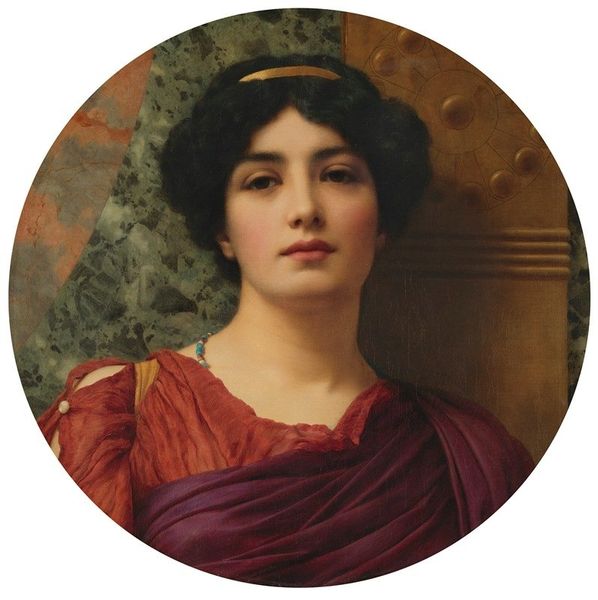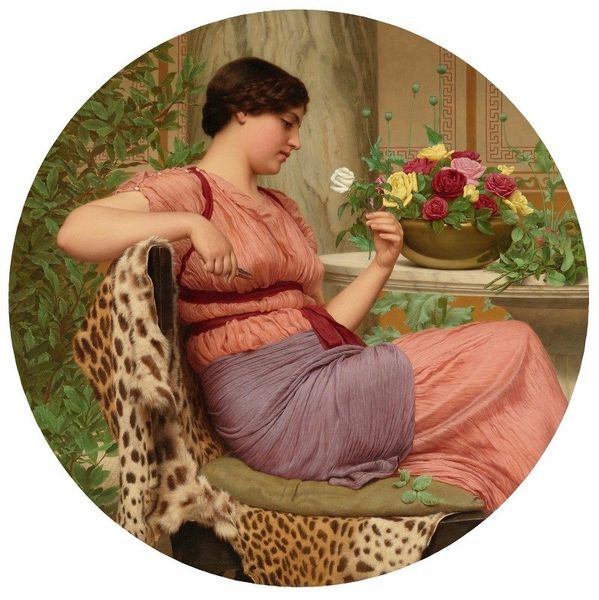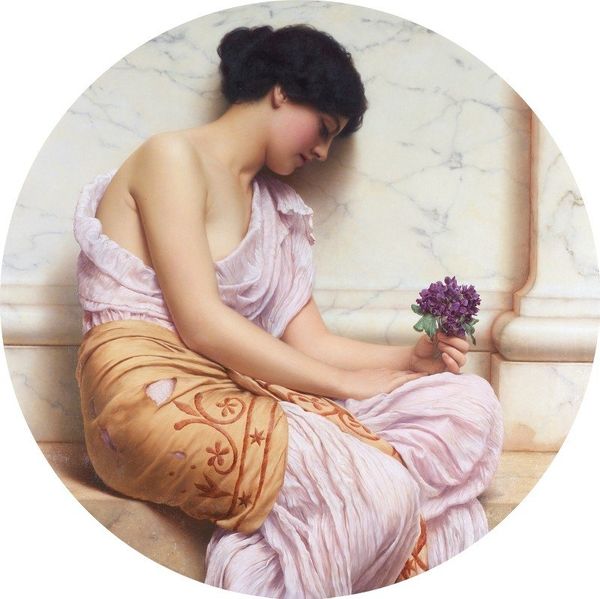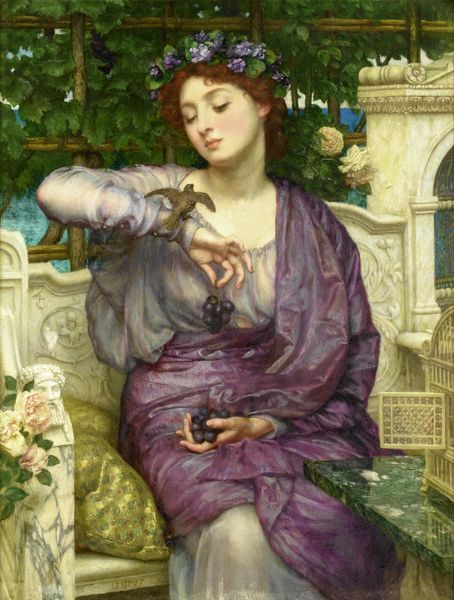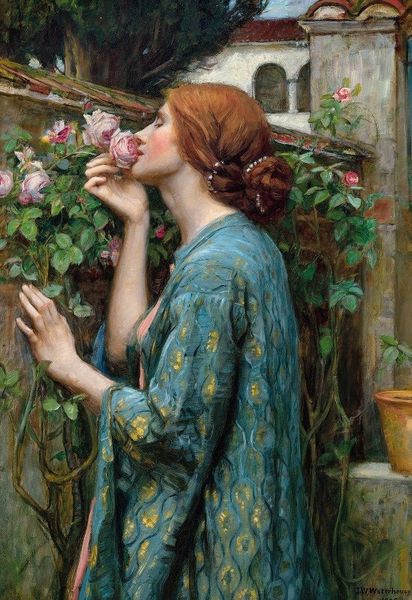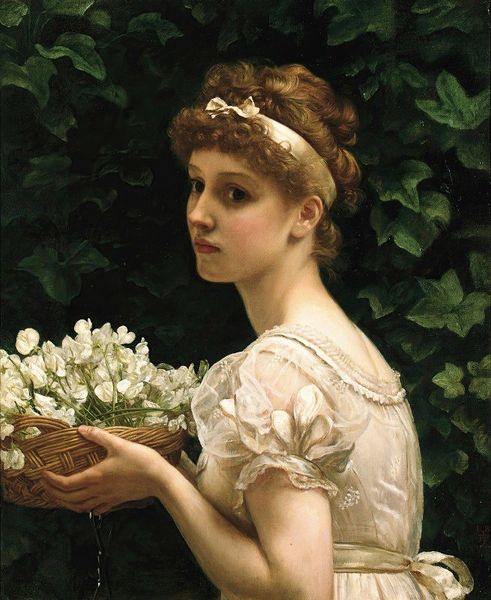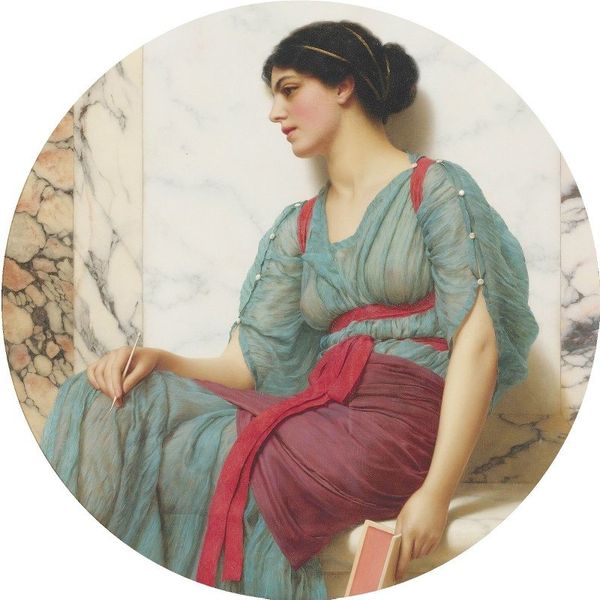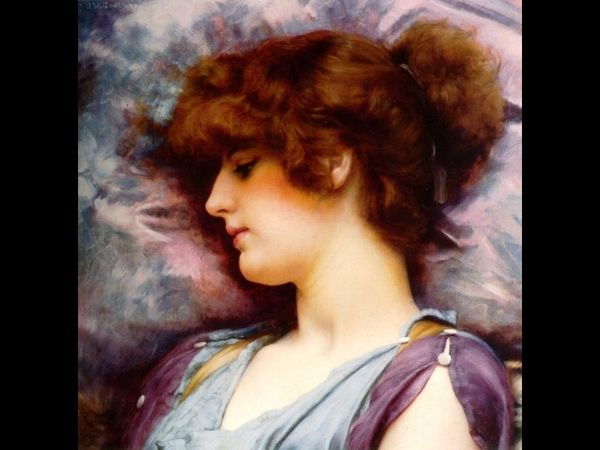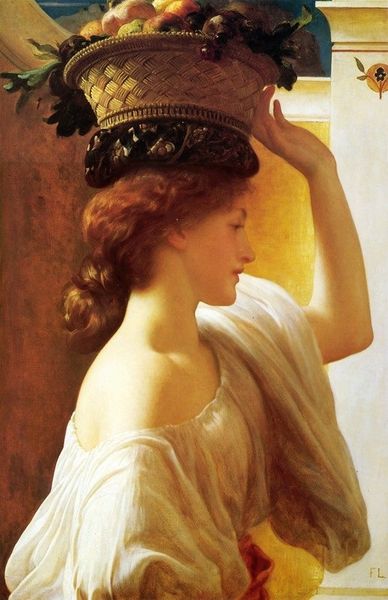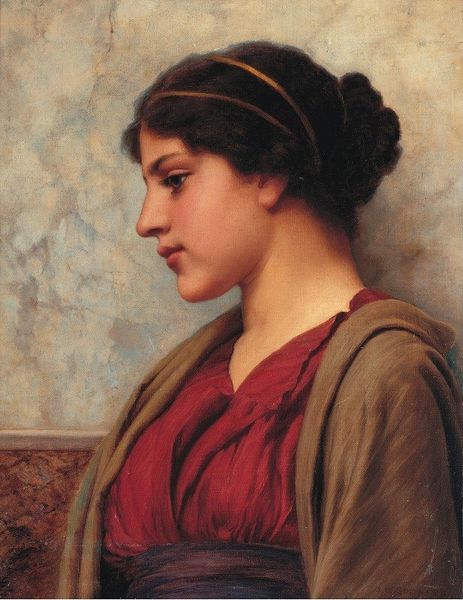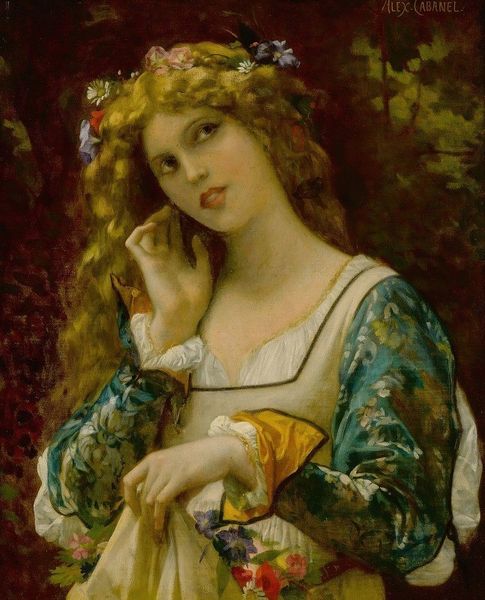
Dimensions: 51 x 51 cm
Copyright: Public domain
Editor: Here we have John William Godward’s "Girl with Red Rose" from 1902, an oil painting that captures a serene, almost melancholic moment. What strikes me is how Godward’s academic style emphasizes the textures of the fabrics, the rose, and her skin, drawing the eye to the materiality of beauty itself. What’s your perspective on this work? Curator: Considering a materialist approach, I see the painting not just as an aesthetic object but as a product of its time, reflecting the socio-economic conditions of its creation. The oil paint, the canvas – these were commodities, produced through industrial processes impacting the working classes. Editor: So, you’re suggesting that even in this seemingly idealized portrait, there's a connection to the broader industrial landscape? Curator: Precisely. The pigments, for instance, may have been derived from exploited resources. And the woman depicted - the costuming and implied leisure – are themselves representations of a specific class’s access to consumption and a constructed visual luxury afforded by colonial extraction of labor and raw materials. Where do those colors really come from, who mixed that paint, who funded this art? Editor: That makes me rethink the rose, too. Is it simply a symbol of beauty, or also a signifier of cultivated luxury and trade? Curator: Indeed! And consider the skill involved in rendering the marble-like quality of the woman's skin – that required a mastery acquired through a system of artistic production – apprenticeships, academies - accessible to only some, perpetuating a hierarchy of artistic labor. We see her leisure, but not the labor that allowed for that image. Editor: So, by looking at the materials and processes, we can uncover the layers of production and consumption embedded within the image. I hadn't considered it that way. Curator: Exactly! It's a lens to critically examine art beyond its surface and expose the hidden stories of labor, resources, and power. Editor: I'll definitely look at paintings differently now, thinking about the "who, how, and why" behind their materiality. Thanks!
Comments
No comments
Be the first to comment and join the conversation on the ultimate creative platform.
